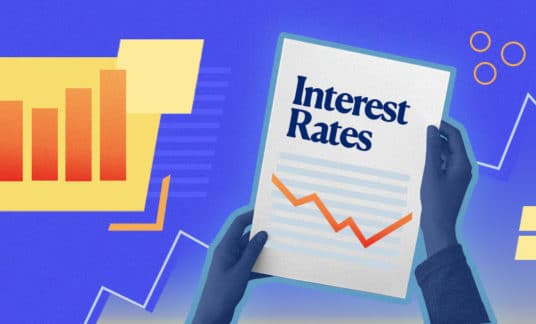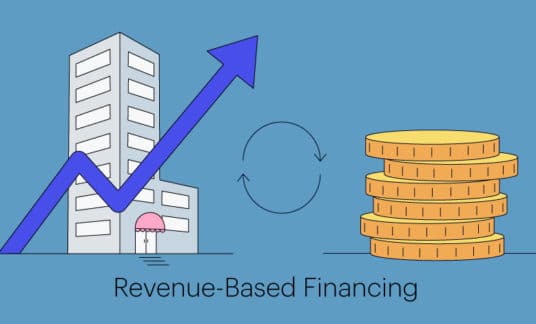A mezzanine loan is similar to a second mortgage, except the funding is secured by stock in the business or a membership interest rather than real estate.
Because mezzanine loans aren’t secured by real property, lenders charge higher interest and provide shorter terms.
What Is Mezzanine Financing?
Mezzanine financing is a hybrid of debt and equity financing that allows business owners to borrow a larger portion of their capital needs than a conventional loan.
Mezzanine loans are layered on top of conventional loans in a typical capital structure—hence the name.
How Mezzanine Financing Works
Mezzanine financing is used when a business has maxed out its asset-based loans or bank loans. It lets business owners generate capital quickly by getting a loan without having to put up collateral. This is high-risk financing, with interest rates that can more than double the average business loan rates.
Mezzanine lending most commonly is used in the expansion of established companies.
Business owners can put less equity into a deal upfront by using a mezzanine lender. They might use this financing as a way to bridge the gap between the cash they have and the senior debt they can qualify for.
Banks might require, for example, a 70% loan-to-value ratio for a buyer, but the buyer doesn’t have the remaining 30% to invest. A mezzanine finance loan could be used to fund some of that 30%.
Once owners finish their expansion, they can often refinance to pay off high-interest mezzanine loans with more conventional long-term debt.
Why Use Mezzanine Financing?
With the interest rate on a mezzanine loan being so high, you might wonder why business owners would consider using this form of financing. Besides forgoing collateral, small mezzanine loans can make debt service more manageable.
- Mezzanine lenders may include features that allow the borrower to roll interest into the loan balance, thereby delaying the payments. Note that senior debt doesn’t allow such an arrangement.
- Another reason many business owners prefer mezzanine debt is it’s treated like equity on the balance sheet, but the interest is tax-deductible.
- Companies may choose to use mezzanine loans because they want to grow quickly without giving up additional equity. When the company grows, so does its value. If the value goes up, the business may be able to refinance its senior debt and mezzanine debt into a consolidated senior loan at a much lower interest rate in the future.
- Businesses also may use mezzanine loans like a second mortgage. Without having to refinance a conventional loan, you can use the mezzanine loans to pull equity out of your company.
-
A Mezzanine Financing Example
Let’s assume the buyer is acquiring a small business for a reasonable multiple at $1 million. The business earns an annual operating income of $200,000. A senior lender will give you 60% ($600,000) at an annual rate of 7% ($42,000 interest-only) a year.
Without mezzanine financing, you would need to come up with the remaining $400,000.
From the $200,000 annual operating income, subtract the senior debt service of $42,000. Assuming a corporate tax rate of 21%, this leaves an after-tax profit of $124,820.
All things being constant, your annual return on investment (ROI) for your $400,000 investment would be about 31% ($124,820 in after-tax profit ÷ $400,000 in total investment).
Reducing your equity investment will reduce your operating income since you’ll have to pay more in loan service, but your ROI will rise and you will have to invest less upfront.
Mezzanine funding allows you to decrease your initial investment while improving your ROI. The downside is that you will pay higher interest rates to secure a mezzanine loan. The longer these mezzanine lending loans are used, the more interest will be paid.
Additionally, if a business defaults on a mezzanine loan, the lender takes an ownership stake, which it could sell or transfer, ceding some degree of control of the business to someone else.
The Advantages of Mezzanine Financing for Investors
For investors, mezzanine debt financing can be a good deal. Higher mezzanine loan interest rates provide a better ROI than normal loans. Consider that treasury notes average around 1.5%-3.5% and mezzanine debt costs can range from 12%-20% annually.
Mezzanine financing lenders collect their payments on a monthly, quarterly or yearly basis.
This type of funding often includes an equity kicker, which might give the investor an option to buy equity at a future date. These kickers can pay out significantly if a business hits it big. If a borrower fails to meet the conditions of the loan, the lender can convert the outstanding balance into equity shares.
Real-estate investment trusts and closed-end funds may own mezzanine debt, which they make available for investors in the form of publicly traded shares. Mezzanine financing in real estate often can provide higher returns than conventional acquisition or development loans. In addition to higher interest rates, these loans are typically short-term and may include fees for applying, underwriting or closing.
How to Tell If You Qualify for Mezzanine Financing
Not every business will qualify for a mezzanine loan—and it isn’t right for every business.
A mezzanine lender will typically do less due diligence than in a senior debt deal, but the lender will want a company that has an established business and a history of being profitable.
Mezzanine financing lenders also will want to know the company’s business plan. Is the plan to expand the business, acquire other companies or grow the bottom line?
Established businesses that have big growth plans may want to consider the mezzanine financing route.
-
For Example
A restaurant owner who wants to open up another location but doesn’t have the capital to fund the expansion or the collateral for a conventional loan might consider alternatives such as mezzanine financing.
A mezzanine lender might look at your expansion plan as a good investment with a high rate of return. If you were to default on your interest payments or repayment terms, the lender would have an ownership position in your business.
Mezzanine loans typically have shorter terms than standard commercial loans. The most common are 5-year terms in which the borrower makes interest-only payments during the term. At the end of the term, the business will need to pay back the loan amount.
The Bottom Line
Mezzanine financing is a type of loan that is structured like a cross between debt and equity. Loans require regular payments of principal and interest. While mezzanine funding is structured as a loan, funds are lent against company stock or an ownership interest rather than real property.
If a business owner defaults on mezzanine financing, the lender has the right to convert their loan into an ownership interest in the company.
Mezzanine financing doesn’t work for everyone, but for businesses that already are using conventional loans and want to avoid coming up with additional cash to fund expansion efforts, this type of funding may be a sound option.











